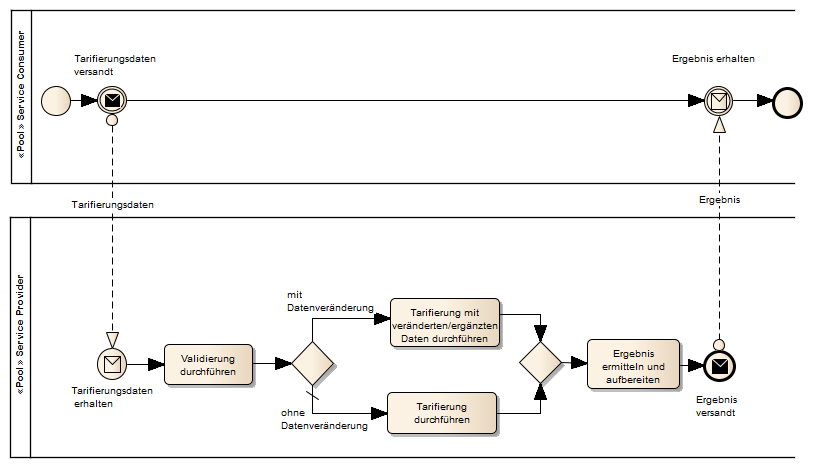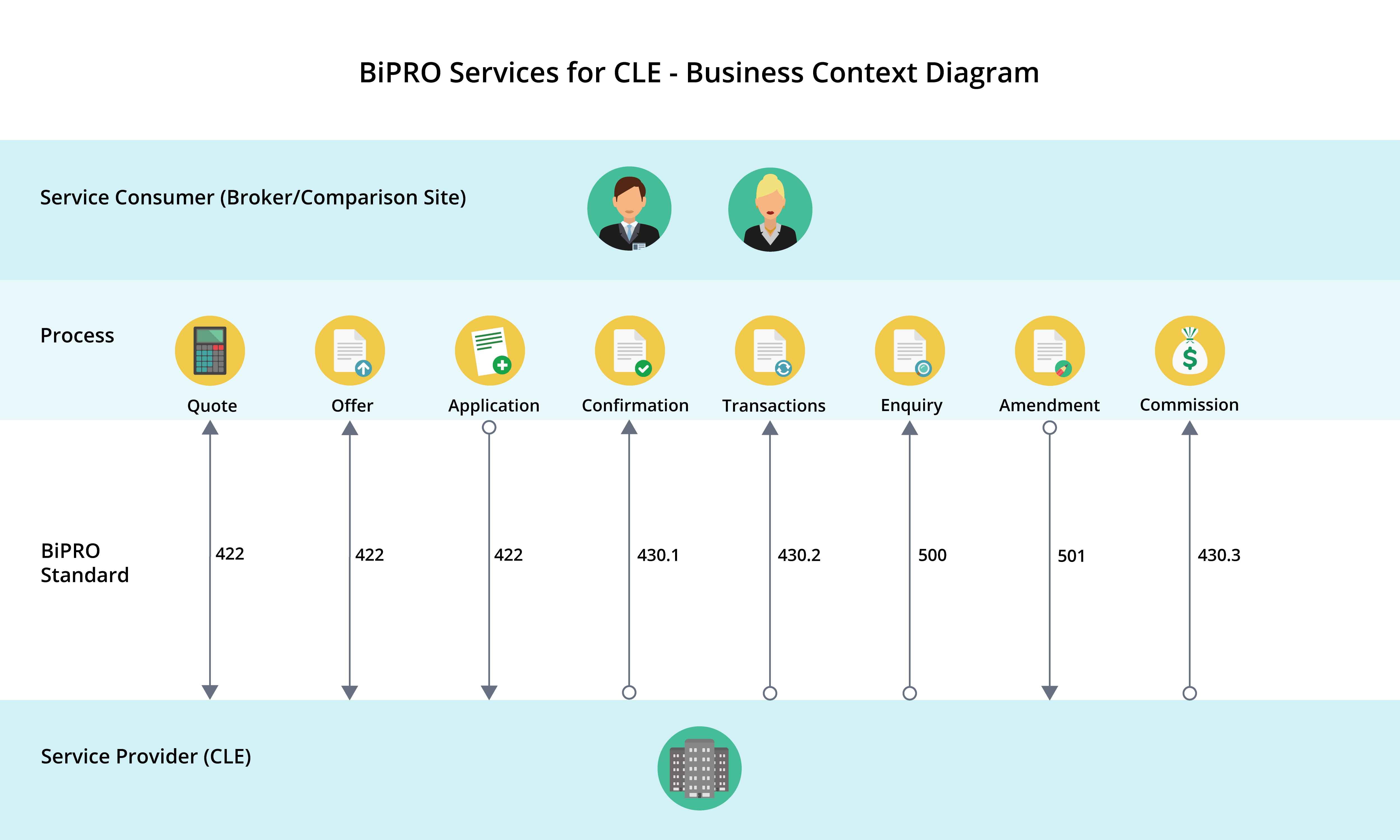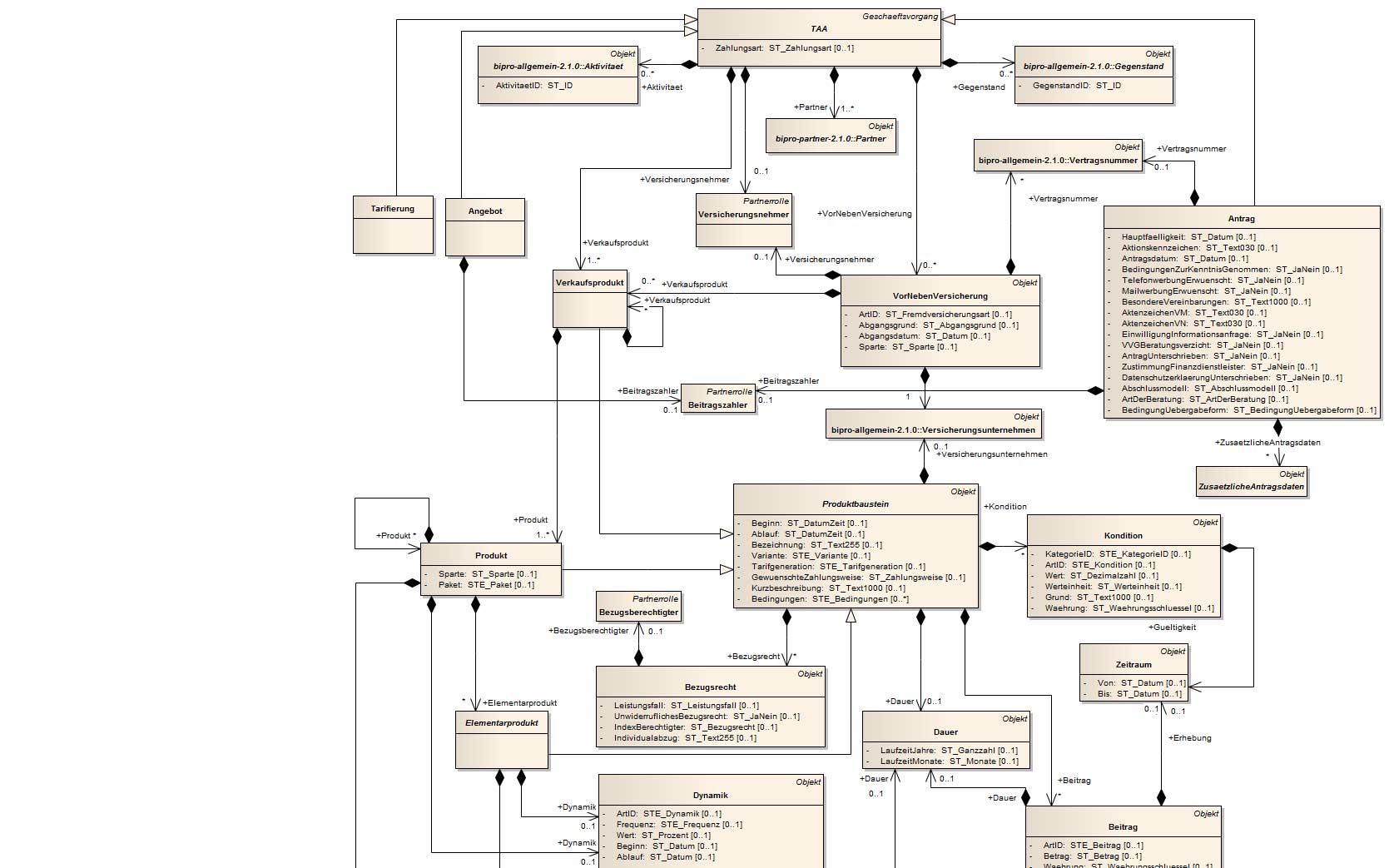B2B Services - Service Design
Life & Pensions Company
Background
This was a case of applying Service Design techniques to the delivery of heavily technical B2B web services. Service Design helped in understanding business context and process, informing and directing the technical implementation. The B2B services were to be implemented using BiPRO standards. BiPRO (Brancheninstitut Prozessoptimierung - "Industry Institute for Process Optimisation") is a German non-profit organisation that defines and publishes standards for communication between insurance market bodies.
As part of an external strategic review, the recommendation was made that the company should expose key pieces of business functionality to industry partners via web services using the BiPRO standards as a common language - for example allowing our products to be sold via price-comparison websites, etc. The task was given to me to make this work! In German! The standards themselves can be viewed as archetypical blueprints of how processes and communications could be implemented within the enterprise - the trick was mapping these to the "real life" business.
The outcomes expected from this initiative were:
- Enablement of the end-to-end sale of new business via third parties using web services.
- Enablement of the publishing of transactional/informational data to third parties using web services.
- Collaboration in the creation of new standards, representing the company and making sure we had "feet under the table" when decisions were being made.
Not a small piece of work. To get the first two parts done I first engaged in ideation and prototyping work, before being given the mandate by the Exec to raise a large team and work with the business to start the project. The third part involved taking part in a standards-forming working group in Germany over the course of about a year and a half, travelling roughly once every three weeks to partake in activities.
What I Did
To kick-off, I took some time to understand the standards documentation with a view to conducting a Proof of Concept/prototype. As indicative cost-estimates were also requested by the Exec, I worked with a software architect in tandem to start sketching out possible technical solutions for the pure B2B communication based on the standards and size up costings for implementation of this "plumbing". What was missing before a true prototype could be started however was a full understanding of how the abstract BiPRO processes and standards would map to our concrete business.
In order to do this I conducted a collaborative session with all high-level stakeholders to ensure buy-in across the enterprise, introduce the standards, give some background as to goals and find out opinion as to ways forward. I also conducted follow-on interviews with business representatives to drive out thinking about sources and triggers for data, what we should and shouldn't communicate and discover how closely BiPRO mapped to the company's business processes. This was especially useful in the context of the transaction-publishing service, as the possible scope covered most aspects of the business. This work allowed a small-scale prototype to be created and tested with a first parter.
With lessons learned from the prototype, the project was begun in earnest. As mentioned above, the B2B services to be delivered by the project covered two areas:
- The sale of new business using web services.
- The publishing of transactional/informational data using web services.
I started with excercises aimed at understanding who the consumers of both of these services would be. Instead of a pure technical solution, we needed to understand who would be using the data, and why. This would enable us to focus our work, and prioritise what elements we needed to deliver. Based on visits to third parties, I developed broker personas for both services, as well as personas for the price-comparison scenario. In workshops we walked these personas through the scenarios described in the BiPRO standards, allowing process flows and use cases to be developed:

The next piece of work was centred around modelling our insurance products for the new business sales B2B service - breaking them down into an information architecture with entities like price characteristics, cover characteristics, etc., and then mapping these to the BiPRO blueprints for products. This meant that when we called our systems for a quotation, we could map responses we got from our calculation engine to the mutually understood language of BiPRO, then expose this via B2B services for consumption by partners. This piece involved a huge amount of testing and iteration with our partners to make sure our products displayed accurately and quickly in things like price comparison sites. As I was the only German-speaking IT person on the prooject team, I was instrumental in creating these tests and cooperating with partners and end-users to conduct them.
On a parallel thread I worked on the transaction B2B service. This had a different flavour to the sales service - though there was less over-and-back communication with the consumer (as it was more a "publishing" service), the effort involved in identifying transaction triggers sourcing appropriate data was huge. As transactions from start to finish of the value chain were of interest to partners, I had to consider the full array of different departments and disparate supporting systems. The Service Design technique of touchpoint mapping was key to understanding which transactions were of importance, and to which systems I must look to source information.
What Were The Outcomes?
The delivery of B2B services for the company was deemed to be a great success. On one side we met one of the strategic goals set out by the Exec, but arguably more importantly, the services were very well received by the market. Not only were we able to expose our products effectively through new channels, but the speed, quality and flexibility of the services were lauded. With the transaction service, the company was recognised market-wide as being able to deliver the greatest breadth of information, along with useful secondary artifacts such as transaction-relevant documents.
Service Design techniques - ideation workshops, system mapping, touchpoint mapping, etc. - underpinned by Service Design methods such as multi-disciplinary collaboration ensured the success of this project.
Client
Life & Pensions Company
Techniques
Research, Interviewing, Analysis, Workshopping, Ideation, Process Mapping, IA, Data Modelling, Prototyping, Touchpoint Mapping

